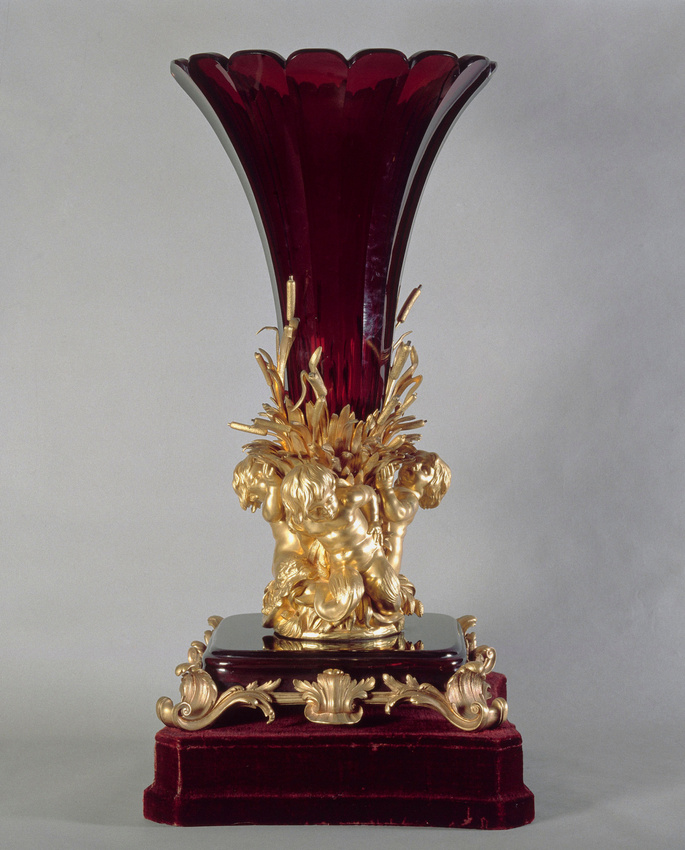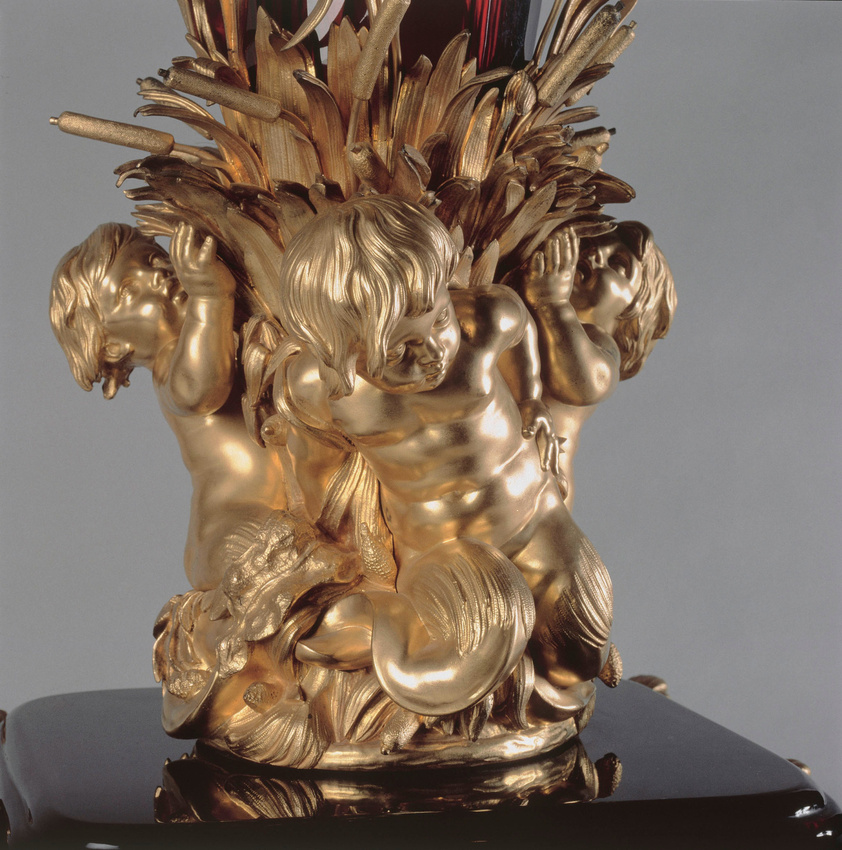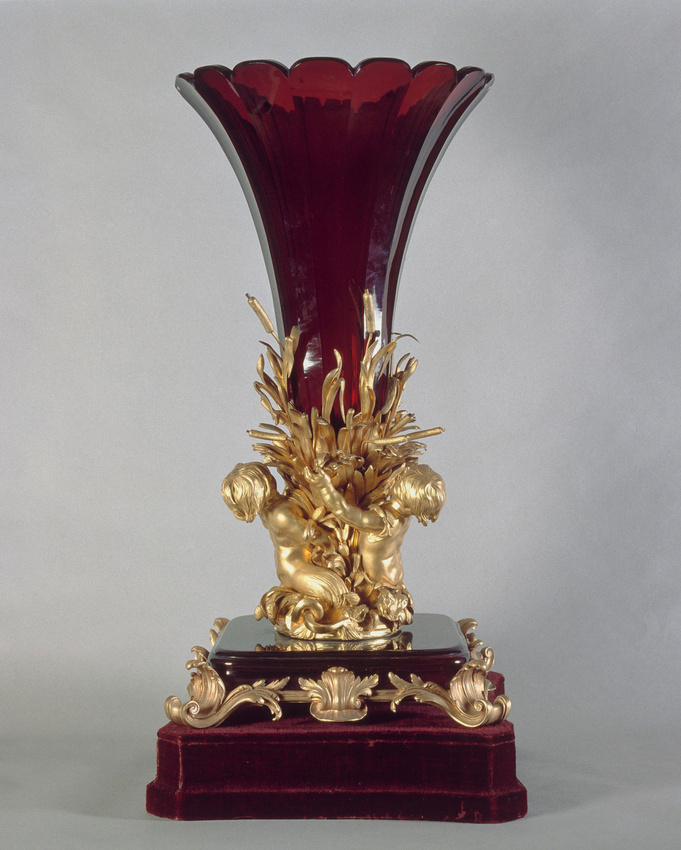Grand vase d'ornement
The crystal works at Clichy-la-Garenne, founded in 1844, rose to prominence in the early Second Empire as France's major producer of coloured glassware. Clichy excelled in the development of bright colours such as emerald green, turquoise, violet, red or purple, the quality and purity of which were enhanced by the deliberate lack of decoration.
At the Universal Exhibition in Paris in 1867, this vase with its pendant, which has now disappeared, graced the entrance to the factory's stand. Like many of the fine pieces made for the great fairs, the svelte, elegant vase rising like the corolla of the convolvulus is enriched with a gilt bronze mount. With its references to the rococo style so popular in interior design in the 1860s and 80s, the stand was probably made in the workshops of the Barbedienne firm. Similar stands, adorned with groups of baby tritons and mermaids, were used for the monumental jardinières designed by Barbedienne in the 1860s.
This large vase is in perfect condition and gives a glimpse of the production of one of the firms which best represented the luxury sector of French industry in the nineteenth century.




